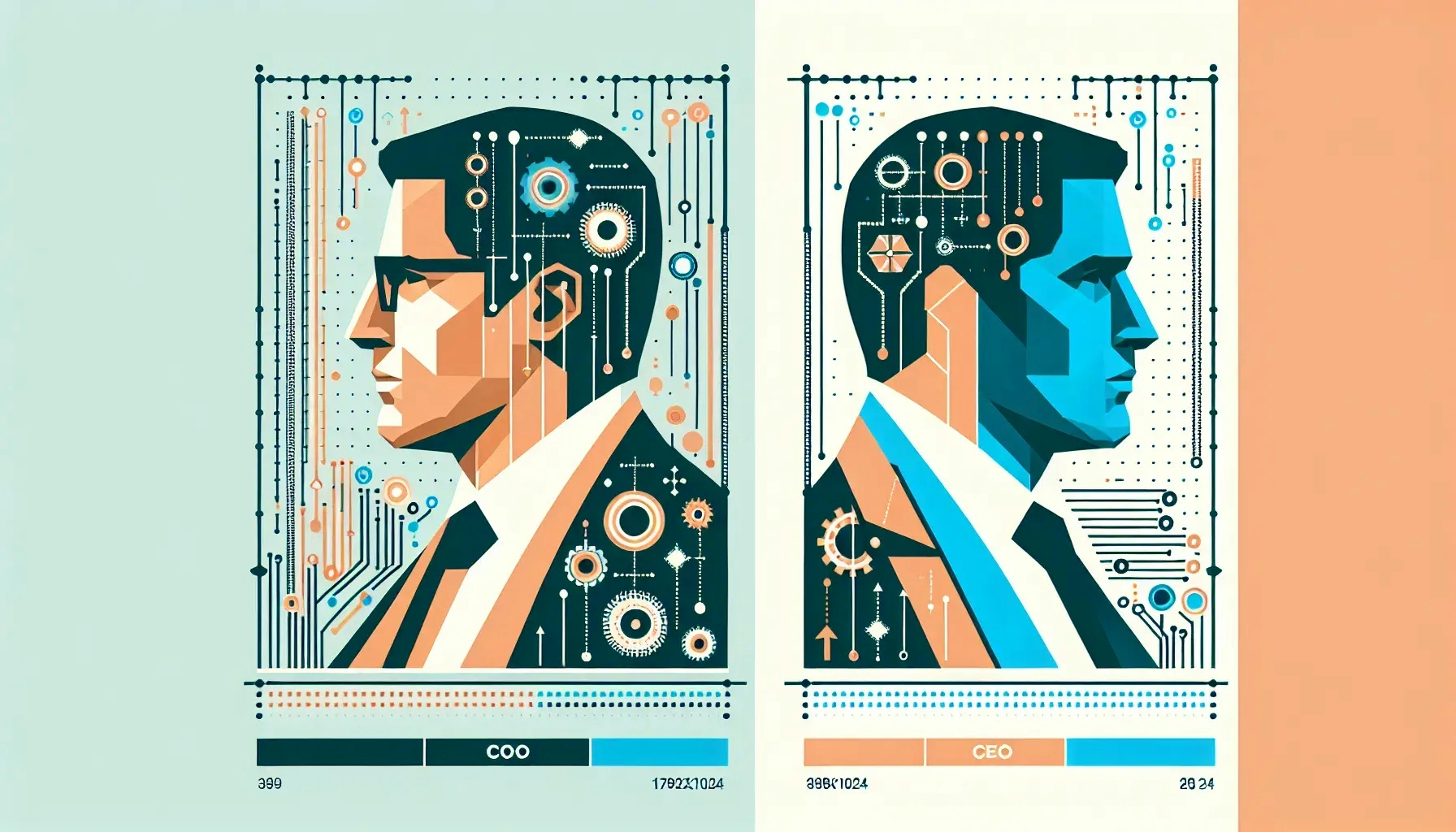COO vs. CEO: Understanding the Difference
COO Insider

In the corporate world, understanding the hierarchy is crucial. Among the top-tier positions, the roles of a Chief Executive Officer (CEO) and a Chief Operating Officer (COO) often cause confusion. This blog post aims to clarify the differences between these two pivotal roles, shedding light on their unique responsibilities, functions, and impacts on a company's success.
The Role of a CEO: A Deep Dive
The CEO sits at the top of the corporate ladder. They are the primary decision-maker, setting the company's strategic direction and vision. The CEO's role is to ensure the company's financial performance and growth, making them accountable to the board of directors and shareholders.
The CEO's responsibilities extend beyond the company's internal operations. They also serve as the public face of the company, representing it to clients, the media, and the general public. Their decisions can significantly impact the company's reputation and public perception.
The CEO's role is not just about making big decisions and setting the company's direction. It also involves inspiring and leading the team. A CEO must motivate employees, foster a positive corporate culture, and ensure that the company's values and mission are clear to all staff members.
The Role of a COO: An In-depth Look
The COO, often considered the second-in-command, primarily oversees the company's day-to-day operations. They work closely with the CEO to implement strategies and ensure the smooth running of the company.
The COO's role can vary significantly depending on the company's size and industry. In some companies, the COO may be responsible for specific departments, such as production or marketing. In others, they may oversee all operational aspects of the company.
The COO's responsibilities often include managing the company's resources, improving operational efficiency, and ensuring that the company meets its strategic goals. They also play a crucial role in employee management, often being responsible for hiring, training, and performance evaluations.
The Interplay Between the CEO and COO
The CEO and COO roles are distinct, yet they must work in harmony for a company to thrive. The CEO sets the vision, while the COO implements it. This dynamic duo must communicate effectively and collaborate closely to ensure the company's success.
The CEO and COO relationship can be likened to that of a captain and first mate on a ship. The captain (CEO) decides the course, while the first mate (COO) ensures the crew follows it. This symbiotic relationship is crucial for steering the company towards its goals.
The CEO and COO must also balance each other out. The CEO's visionary thinking needs to be grounded by the COO's practical, operational perspective. This balance helps prevent the company from veering off course or becoming too focused on either strategy or operations.
The Impact of a CEO and COO on a Company
The CEO and COO can significantly impact a company's success. The CEO's strategic decisions can shape the company's future, while the COO's operational efficiency can determine its profitability.
The CEO's leadership style can also influence the company's culture and employee morale. A CEO who fosters a positive, inclusive culture can boost employee satisfaction and productivity.
On the other hand, the COO's management of operations can affect the company's bottom line. A COO who effectively manages resources and improves operational efficiency can increase the company's profitability.
The Evolution of the CEO and COO Roles
The roles of the CEO and COO have evolved over time. In the past, the CEO was often the founder of the company, while the COO was a hired professional. However, this has changed in recent years, with many companies choosing to separate the roles of founder and CEO.
The role of the COO has also evolved. In the past, the COO was often seen as the CEO's right-hand person, responsible for implementing the CEO's vision. However, today's COOs are often seen as potential CEO successors, with many companies using the COO role as a stepping stone to the CEO position.
The Future of the CEO and COO Roles
As the business landscape continues to change, so too will the roles of the CEO and COO. With the rise of technology and the increasing importance of data, both roles will likely become more focused on digital transformation and data-driven decision-making.
The CEO's role may become more focused on innovation and disruption, as companies strive to stay ahead in a rapidly changing market. Meanwhile, the COO's role may become more focused on managing the complexities of digital operations and ensuring the company's agility in the face of change.
Deciphering the Roles: CEO vs COO
Understanding the differences between a CEO and a COO is crucial for anyone involved in the corporate world. While the CEO sets the strategic direction and represents the company to the outside world, the COO ensures the smooth running of daily operations. Together, they form a powerful duo that drives a company's success. As the business landscape continues to evolve, so too will these roles, making it even more essential to understand their unique responsibilities and impacts.